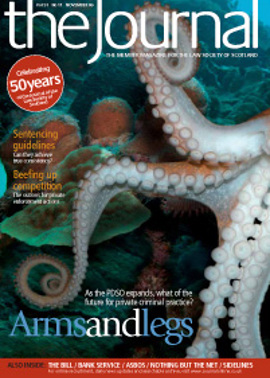So long, and thanks for all the fizz

After hours at the IBA 2006 in Chicago, the in-house lawyer was invited to break canapés with her private practice siblings in a variety of fantastic settings. You could sip champagne while touring the football stadium of the Chicago Bears; at the museum hosting the King Tutankhamen exhibition; while gazing from the 40th floor of the IBM Plaza from the expanse of Lake Michigan to the legacy of Frank Lloyd Wright; or in the company of treasures such as Seurat’s “A Sunday on La Grande Jatte”, Edward Hopper’s “Nighthawks” or Grant Wood’s “American Gothic” at the candlelit Art Institute, to the sound of a harpist playing Gershwin.
But perhaps the most unusual venue was the Aquarium, where there were even more fish than lawyers. One particular fish, sebastes auriculatus, was not, admittedly, passing out business cards; at first, I thought it was dead. This is the brown rockfish, whose main interests are camouflage and “home-site fidelity”, rarely moving from its birthplace. Nice for its mother, doubtless, but unrewarding for the observer, compared to the dolphins and sharks.
Fishing for business
If the piscine epithet for the corporate law private practitioner is “shark”, one might think that in-house lawyers were the brown rockfish of our vocation: self-effacing, bound to one spot. The proceedings at the IBA, however, tended to challenge that allegory. For one thing, it was the sharks who were feeding the rockfish. For another, the in-house lawyer, at least in America, is not big on fidelity.
According to Henry Horbaczewski, North American General Counsel for Reed Elsevier, “client mobility [is] at an all-time high and client loyalty at an all-time low”. Speaking at a standing-room only session on how lawyers could win new clients and more business, he added that as few as a third of American in-house lawyers said they would be willing to recommend a client from their own roster to another corporate.
Mr Horbaczewski cited the three Rs of relationships, referrals and reputation as the key to getting new clients. As to keeping existing ones, he particularly cautioned private practitioners against “nasty surprises” which gave the in-house counsel no time to condition the expectations of the internal client; lack of an opportunity for input by the in-house team into legal work which had been outsourced; confusing billing; and failure to return telephone calls and emails. “Life,” he claimed depressingly, “is a beauty parade that never ends.”
Undercurrents
Logan Robinson, General Counsel at Metaldyne in the United States, felt that private practitioners underrated the role of the personal in their attempts to win business. He pointed out that firms would probably have lawyers who had already worked or studied with someone at the client company – “that is something that most firms overlook completely”. More importantly, given that corporate legal departments were keen to keep overall control of legal work in-house, the personal relationships between external and internal lawyers were vital. He recommended that firms seeking work research the backgrounds of individuals and try to match them, in terms of interest or experience, to the beauty parade client.
Some of this may not cross the Atlantic. In a small jurisdiction like ours, keeping track of former colleagues or fellow graduates is easy to the point of inexorability. Other pieces of advice seemed surprisingly obvious. Would a lawyer who troubled to come to a standing-room only session on building business, for instance, really habitually neglect to return calls from clients?
Scales of time
The underlying answer may be that the private practitioner and the client are, in a sense, in different time zones. The in-house lawyer is available to the client straight away – that is part of his or her raison d’être. The internal client is accustomed to getting, and the in-house lawyer to providing, instant gratification.
The private practitioner, on the other hand, may have quite a different concept of a reasonable timescale for returning a call. She is likely to be prioritising from among a list of call-backs. She may, moreover, be reluctant, in her status as outside expert, to ring back without a definitive answer. The pan-professional recognition that customer care is at least as important as technical knowledge is dawning unevenly; some of us still seem to cherish the delusion that our clients love us for our minds, whereas professional skill can patently only be detected slowly and provisionally by a lay client. In crisis, clients may wish to talk, even more than to listen, to their advisers.
Courting rituals
The session contained tips directed at the in-house lawyer as well. Logan Robinson, for example, said that when running a beauty parade, it was important to focus attention on the initial letter to outside firms, to be specific about what was being sought, and not to fight shy of drilling down to details – such as how the firms planned to staff projects and what controls the client will have over any variation in such plans. Overall, however, the session was an exhortation to the private practitioner.
Yet, one might think that in-house lawyers who would not be willing to recommend a panel firm to another company should be asking themselves some searching questions. There was universal agreement that relationships are key both in establishing and maintaining a relationship between a firm and an in-house team. Relationships can be good, bad, constructive, distant, collegiate or highly asymmetrical. The one thing they cannot be is unilateral.
The higher species
In-house lawyers are a minority of the profession, and a still smaller minority of traineeships are provided in-house. That being the case, more in-house lawyers will have experience of the private practitioner angle than vice versa. It is perfectly legitimate, given the choice of excellent external advice available in Scotland, for in-house lawyers to expect their panel firms to enter wholeheartedly into partnership, but, pragmatically, it makes for a better job if the in-house lawyer takes some responsibility for translating his or her individual client’s needs or expectations to the panel firm. To seek ever greater and more flexible involvement from the private practitioner against a background of client mobility is ambitious and may ultimately be self-defeating. Firms have to pitch, but ultimately, both sides of the profession have to pitch in, if the client’s interests are to be optimally protected.
The consultant Ann Lee Gibson, speaking at the session, listed failure to ask for feedback as “the number one mistake” of firms who sought to improve their performance in beauty parades. Firms, she said, should consider asking clients if they are happy to give feedback before agreeing to pitch. Again, that seems a startlingly obvious suggestion. If firms are willing to commit their time to a protracted or elaborate beauty parade process, it is only a reciprocal professional courtesy on the part of the in-house lawyer to have a follow-up, debrief meeting, should the firm wish.
It is becoming clear even to the saddest 80s relics that the day of the toothily smiling shark has gone. The brown rockfish, one suspects, never had a day. Dominating the show at the Shedd Aquarium, Chicago, was neither. It was the dolphins, who alternately swam and leapt to the delight of all present, including, by the looks of things, themselves. Perhaps it is these intelligent and gregarious creatures – strong and graceful in their own element, able energetically to transcend it and with only the most endearing tendency to spout – which all lawyers, in-house or private practice, should emulate. Dolphins attend receptions, not networking seminars. They already know how to work the tank.
Rosalind McInnes is a solicitor with BBC Scotland
In this issue
- Home and away
- The importance of kinship care
- Growing arms and legs
- Changing its spots?
- Guiding hand
- Trustbusters unite
- Closing the books
- Spam: the managed solution
- Nothing like Nothing but the Net!
- Banking on service
- You want certified?
- Enough is enough
- Provision and prejudice
- Work and families
- Cash trapped
- Man of business
- Scottish Solicitors' Discipline Tribunal
- Website reviews
- Book reviews
- Sale questionnaire to be tested
- So long, and thanks for all the fizz
- ASBO, the young misfit






